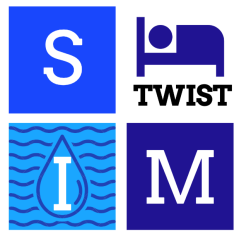
Project
Tourism and water scarcity: analysis and policy options
In the Mediterranean region, tourism is an important but under-researched consumer of water. This project aims to 1) estimate tourism’s share in current and future macro-level water scarcity in the Mediterranean, and 2) study and simulate water-related behaviour of tourism stakeholders at the micro-level. The project’s ultimate objective is to inform tourism decision-makers about the effectiveness of a variety of measures to reduce tourism’s water consumption.
Tourism tends to be concentrated in warm and dry regions and seasons, competing with local populations, nature, agriculture and other sectors for scarce water resources. Tourism water use has long been overlooked, but has gained (renewed) interest as a result of the realities of climate change. In many tourism destinations, a sustainable water system is untenable without a central role for tourism. SIMTWIST’s ultimate aim is to inform public and private decision-makers in tourism on the effectiveness of measures to increase water efficiency and reduce water consumption.

The SIMTWIST project takes a systemic and stakeholder-centred look at tourism-related water use. Systemic in the sense that it addresses both supply and demand, is interdisciplinary and dynamic, and takes feedbacks into account. Stakeholder-centred in the sense that individual stakeholders are the basic unit of analysis, putting stakeholder heterogeneity centre-stage, and that stakeholder behaviour is studied in its social and economic context. Through interviews, statistical analyses and behavioural simulations, insights are collected on how tourists and tourism stakeholders behave with respect to water use. The participatory modelling approach that we propose provides stakeholders with a simplified but clearly recognizable spatial setting, which allows them to more easily position themselves in the socio-environmental system at hand. SIMTWIST’s spatial setting is constituted by the river catchments and reservoirs that provide the tourism destination with fresh water. The dynamics of these river catchments and reservoirs are represented by reservoir models as well as hydrological models. Such representation sets the scene for the water consumption work and allows for the exploration of various scenarios of future water availability.
In each of the mass tourism case study areas, Benidorm (Spain) and Rimini (Italy), water supply and water demand are confronted in an Agent-Based Model. The agents in such a model are the tourism stakeholders. They exhibit different behaviour as they differ in terms of resources, relationships, perceptions, and other features. Once the current interactions between supply and demand are understood, the agent-based model is used to explore future development, for example through climate change scenarios (that influence both the supply and demand side) or the introduction of water saving policies. The agent-based model can be used as a safe laboratory for policy experimentation, testing the effectiveness of policy measures for achieving reductions in water consumption. The project will provide decision-makers with a better grasp of the way possible interventions affect the tourism water system at hand.
More information on the project website: www.simtwist.eu
